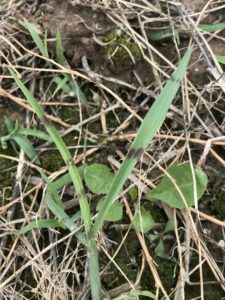
We have started to notice Junglerice/Barnyardgrass emergence here in West Tennessee on Tuesday (April 28th). The key way to ID junglerice at this young stage is the purple base and flat stem. As the grass matures, you will start to notice some purple striping on the leaves as well as not having a ligule.

Based on some preliminary research, these grasses are starting to take over much of the fields. We conducted a field survey last fall and covered 75 fields across West and Middle Tennessee and we were finding junglerice to be in 64% of these fields. We expect as the seed bank grows, we are going to find more of these grasses in fields this year.
A good option for control is to go with a straight glyphosate application at burndown to kill most of these annual grasses and wait to come back with dicamba in-crop in an Xtend cropping system. This avoids dicamba reducing the grass control of glyphosate. More can be seen on the antagonism piece with dicamba from a blog posted last year Dicamba Tank mixing with Glyphosate and/or Clethodim Effect on Junglerice Control.
Some applicators last year and this spring have applied glyphosate at a quart rate with 8 gallons per acre (GPA) and have seen improved grass control. This is key to remember as we are going to have to start splitting these glyphosate and dicamba applications to better control our grass issues. Some preliminary research shows that waiting 3-5 days after a dicamba application in-crop to apply glyphosate results in improved grass control.

